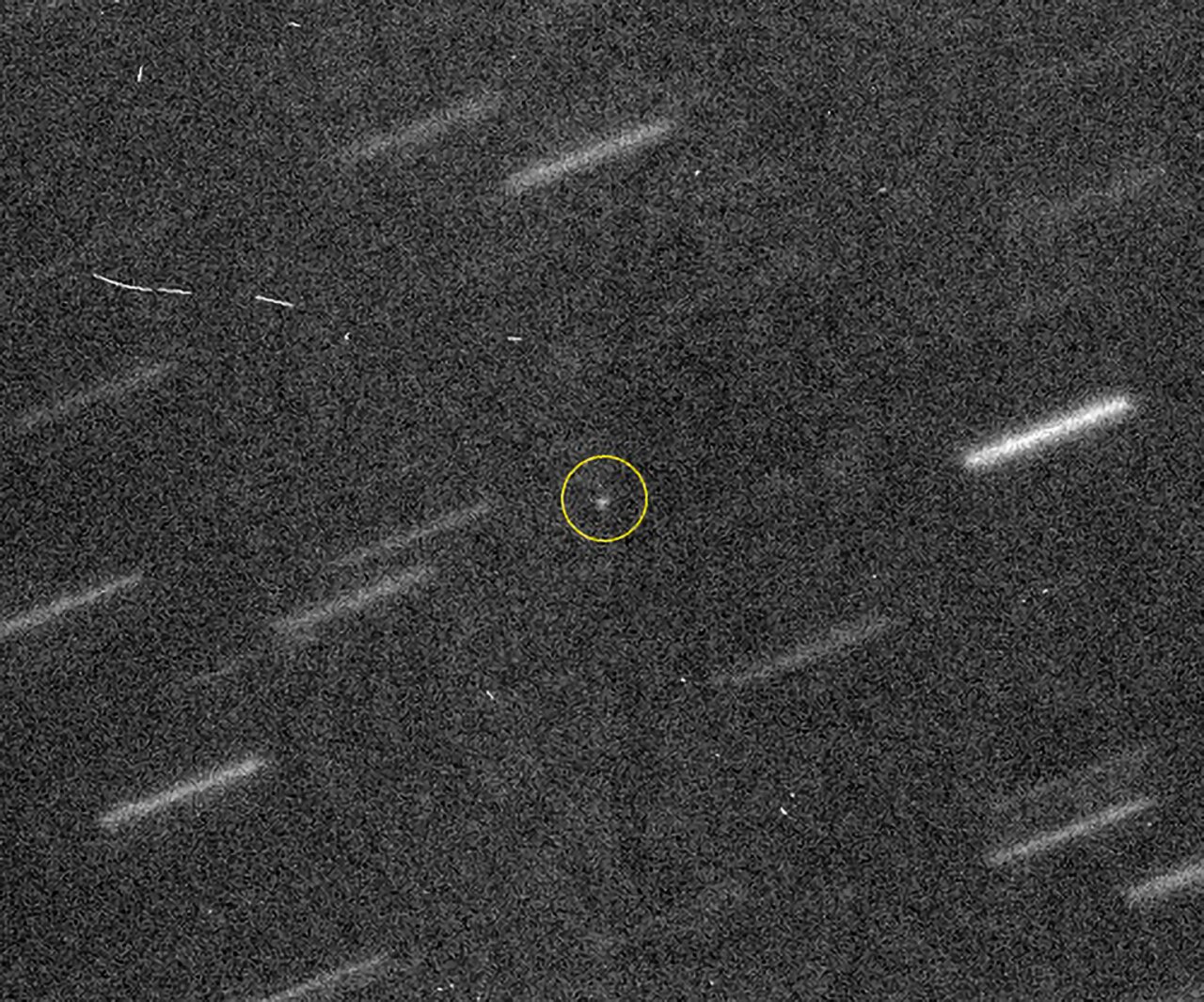All-Clear Asteroid Will Miss Earth in 2040
December 20, 2012

Potential asteroid collision in 2040 is a non-threat based on new Gemini Observatory data.
Using the Gemini North telescope on Mauna Kea, Hawai‘i a team of astronomers from the University of Hawaii’s Institute for Astronomy (IfA) have confirmed that the chance of asteroid 2011 AG5 impacting Earth in 2040 is no longer a significant risk – prompting a collective sigh-of-relief. Previously, scientists estimated that the risk of this 140-meter-diameter (about the length of two American football fields) asteroid colliding with the Earth was as high as one in 500.
If this object were to collide with the Earth it would have released about 100 megatons of energy, several thousand times more powerful than the atomic bombs that ended World-War II. Statistically, a body of this size could impact the Earth on average every 10,000 years.
The observations, using the Gemini Multi-Object Spectrograph (and imager), were especially challenging said team-member Richard Wainscoat. “These were extremely difficult observations of a very faint object,” he said. “We were surprised by how easily the Gemini telescope was able to recover such a faint asteroid so low in the sky.” The Gemini observations were made on October 20, 21, and 27, 2012.
In addition to multiple observations since the asteroid’s discovery, the team had also acquired images about two weeks earlier with the University of Hawai‘i 2.2-meter telescope also on Mauna Kea – however, these data were all less conclusive and required confirmation. Gemini was able to make the follow-up observations rapidly due to the observatory’s scheduling flexibility and availability of several instruments at a moment’s notice.
IfA astronomers David Tholen, Richard Wainscoat, Marco Micheli, and Garrett Elliott conducted the original observations and analysis of the data. Further analysis was performed at NASA’s Near-Earth Object Program Office at the Jet Propulsion Laboratory (JPL) in Pasadena, California. The updated trajectory of 2011 AG5, based on the Gemini data, has a factor of 60 less uncertainty than the previous observations due in part to the increase in sampling points in the asteroid’s orbit. The original discovery was made from images obtained with the NASA-sponsored Catalina Sky Survey on Mt. Lemmon in Arizona.
According to a press release issued by JPL, while this new result has reduced the interest in 2011 AG5, the experience gained by studying this object and conducting a contingency deflection analysis has demonstrated that astronomers, using NSF and NASA facilities, are well poised to detect and predict the trajectories of Earth-threatening asteroids in the future.
More Information
The data for this study are being published by the Minor Planet Center in Cambridge, Massachusetts.
Contacts
David Tholen
tholen@ifa.hawaii.edu
(808) 956-6930
520-461-6925
Astronomer University of Hawai‘i – Institute for Astronomy
Peter Michaud
pmichaud@gemini.edu
(808) 974-2514
808-936-6647
Public Information and Outreach Manager Gemini Observatory
Hilo
Hawai‘i
